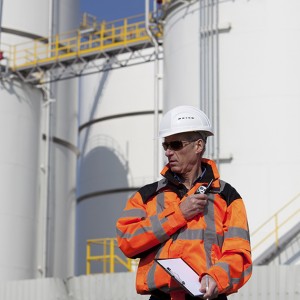 Chemical
Chemical
The Chemical Sector is a vital element of the U.S. economy, relying on and supporting a broad range of other infrastructure sectors. The sector can be divided into five main segments, based on the end product produced:
- Basic chemicals
- Specialty chemicals
- Agricultural chemicals
- Pharmaceuticals
- Consumer products
 Commercial Facilities
Commercial Facilities
Commercial Facilities function on the rule of open public access, the general public can normally access and move freely throughout these facilities without the deterrent of highly visible security barriers. The majority of the facilities in this sector are privately owned and operated. The Commercial Facilities Sector includes automation systems focused on security as well as reduction of costs through integrated automation systems. We deploy these systems and solutions at –
- Resorts and Lodging (e.g. hotels, motels, conference centers).
- Public Assembly (e.g. arenas, stadiums, aquariums, zoos, museums, convention centers).
- Sports Leagues (e.g. professional sports leagues and federations).
- Gaming (e.g. casinos).
- Outdoor Events (e.g., theme and amusement parks, fairs, campgrounds, parades).
- Real Estate (e.g., office and apartment buildings, condominiums, mixed use facilities, self-storage).
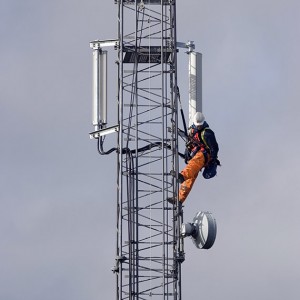 Communications
Communications
The Communications Sector is a vital element of the U.S. economy, it is essential to the operations of all businesses, public safety organizations, and government. The sector has evolved from predominantly a provider of voice services into a varied, competitive, and interconnected industry using terrestrial, satellite, and wireless transmission systems. The transmission of these services has become interconnected; satellite, wireless, and wireline providers depend on each other to carry and terminate their traffic and companies routinely share facilities and technology to ensure interoperability. The private sector, as owners and operators of the majority of communications infrastructure, is the primary entity responsible for protecting the sector’s infrastructure and assets. Working with the federal government, the private sector is able to predict, anticipate, and respond to sector outages and understand how they might affect the ability of the national leadership to communicate during times of crisis, impact the operations of other sectors, and affect response and recovery efforts.The Communications Sector is closely linked to other sectors, including:
- The Energy Sector provides power to run cellular towers, central offices, and other critical communications facilities.
- The Information Technology Sector provides critical control systems and services, physical architecture and Internet infrastructure.
- The Financial Services Sector relies on communications for the transmission of transactions and operations of financial markets.
- The Emergency Services Sector depends on communications for directing resources, coordinating response, alerting the public, and receiving emergency 911 calls.
 Critical Manufacturing
Critical Manufacturing
The Critical Manufacturing Sector is vital to the economic prosperity and stability of the United States. The Critical Manufacturing Sector identified the following industries to serve as the core of the sector:
- Primary Metal Manufacturing
- Iron and Steel Mills and Ferro Alloy Manufacturing
- Alumina and Aluminum Production and Processing
- Nonferrous Metal (except Aluminum) Production and Processing
- Machinery Manufacturing
- Engine, Turbine, and Power Transmission Equipment Manufacturing
- Electrical Equipment, Appliance, and Component Manufacturing
- Electrical Equipment Manufacturing
- Transportation Equipment Manufacturing
- Vehicle Manufacturing
- Aviation and Aerospace Product and Parts Manufacturing
- Railroad Rolling Stock Manufacturing
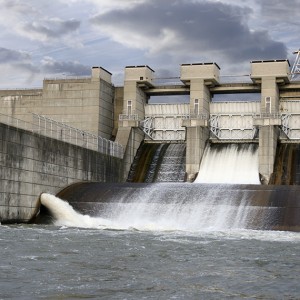 Dam
Dam
The Dam Sector is comprised of assets that include dam projects, hydropower generation facilities, navigation locks, levees, dikes, hurricane barriers, mine tailings, other industrial waste impoundments, and other similar water retention and water control facilities. The Dam Sector is a crucial part of the nation’s infrastructure and provides a wide range of economic, environmental, and social benefits, including hydroelectric power, river navigation, water supply, wildlife habitat, waste management, flood control, and recreation. The Dam Sector has interdependencies with a wide range of other sectors, including:
- Emergency response sometimes relies on Dam Sector assets for firefighting water supply, emergency water supply, and waterway access during a significant disaster where access by land is impossible.
- Hydropower dams produce approximately 8 to 12 percent of the nation’s power needs.
- Dam Sector assets are a source of water for our nation’s food and agriculture production.
- Dams and locks manage navigable waters throughout inland waterways for shipping and recreation.
- Water and wastewater management systems rely on Dam Sector assets to provide water to large populated areas and commercial facilities.
 Defense Industrial Base
Defense Industrial Base
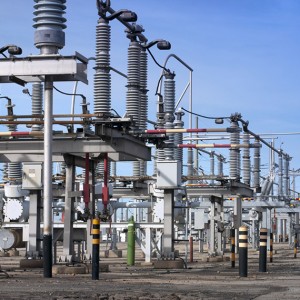 Energy
Energy
 Financial Services
Financial Services
The Financial Services Sector represents a critical component of our nation’s infrastructure. Financial institutions provide a wide array of products from the largest institutions with assets greater than one trillion dollars to small community banks and credit unions. Whether an individual savings account, financial derivatives, credit extended to a large organization, these products allow customers to:
- Deposit funds and make payments to other parties;
- Provide credit and liquidity to customers;
- Invest funds for both long and short periods; and
- Transfer financial risks between customers.
 Food and Agriculture
Food and Agriculture
The Food and Agriculture Sector is almost exclusively privately owned and is composed of an estimated 2.2 million farms, 900,000 restaurants, and more than 400,000 registered food manufacturing, processing, and storage facilities. This sector accounts for roughly one-fifth of the nation’s economic activity. The Food and Agriculture Sector has critical dependencies with many sectors, but particularly with the following:
- Water and Wastewater Systems, for clean irrigation and processed water;
- Transportation Systems, for movement of products and livestock;
- Energy, to power the equipment needed for agriculture production and food processing; and
- Financial Services, Chemical, and Dams.
 Government Facilities
Government Facilities
 Healthcare and Public Health
Healthcare and Public Health
 Information Technology
Information Technology
 Transportation Systems
Transportation Systems
The nation’s transportation systems rapidly, safely, and securely move people and goods through the country and overseas. The Transportation Systems Sector consists of seven key subsectors, or modes:
- Aviation includes aircraft, air traffic control systems, and approximately 450 commercial airports and 19,000 additional airports, heliports, and landing strips.
- Highway Infrastructure and Motor Carrier encompasses nearly 4 million miles of roadway, almost 600,000 bridges, and some 400 tunnels in 35 states. Vehicles include automobiles, motorcycles, trucks carrying hazardous materials, other commercial freight vehicles, motorcoaches, and school buses.
- Maritime Transportation System consists of about 95,000 miles of coastline, 361 ports, 25,000 miles of waterways, 3.4 million square miles of Exclusive Economic Zone, and intermodal landside connections, which allow diverse modes of transportation to move people and goods to, from, and on the water.
- Mass Transit and Passenger Rail includes service by buses, rail transit (commuter rail, heavy rail–also known as subways or metros–and light rail, including trolleys and streetcars), long-distance rail (cable cars, inclined planes, funiculars, and automated guideway systems).
- Pipeline Systems consist of vast networks of pipeline that traverse hundreds of thousands of miles throughout the country, carrying nearly all of the
nation’s natural gas and some hazardous liquids, as well as various chemicals. - Freight Rail consists of seven major carriers, hundreds of smaller railroads, over 140,000 miles of active railroad, over 1.3 million freight cars, and roughly 20,000 locomotives.
- Postal and Shipping moves over 574 million messages, products, and financial transactions each day.

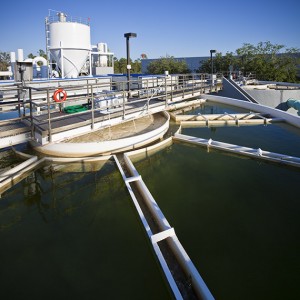 Water and Wastewater Systems
Water and Wastewater Systems